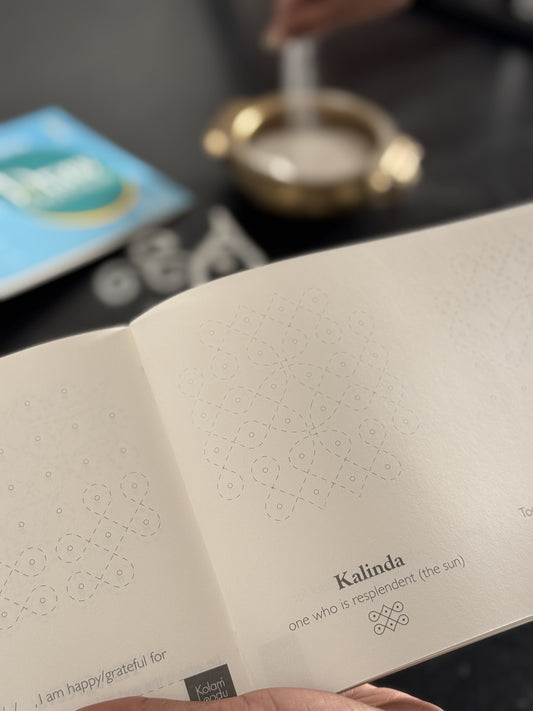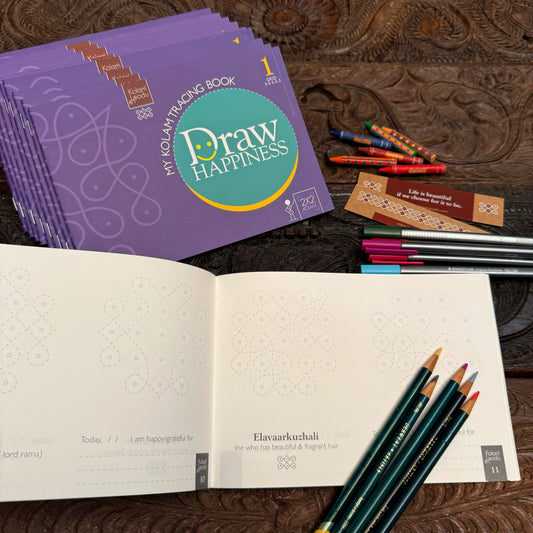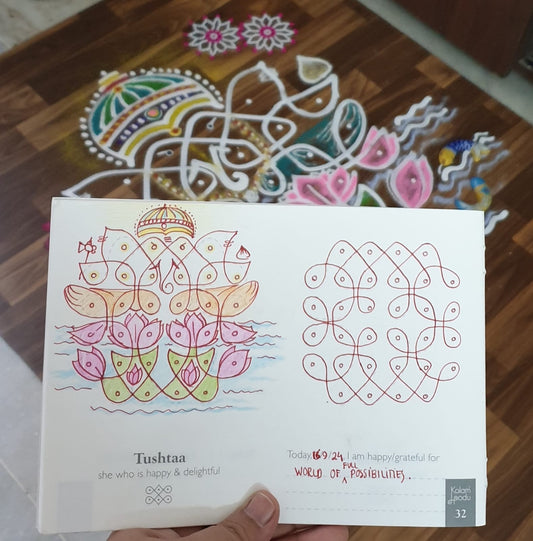In this blog, we delve into the profound philosophy behind kolam, the traditional floor art. Beyond its visual allure, kolam embodies essential values and principles. It represents impermanence, unity, and mindfulness, encouraging us to appreciate the present moment. Kolam's symmetrical patterns symbolize harmony and balance in life. It's a creative outlet for self-expression and a daily ritual that fosters spirituality and gratitude. Join us on this journey of introspection and artistry through kolam.
While kolam is commonly known as a traditional floor art form, it also holds a deeper philosophical significance that reflects certain values and principles. Here are some philosophical aspects associated with kolam:
1. Transience and Impermanence: One of the fundamental aspects of kolam is its ephemeral nature. Kolams are typically drawn on the ground using materials like rice flour or powders, and they naturally fade away or are erased over time. This impermanence reminds us of the transient nature of life and encourages us to appreciate the beauty of the now.
2. Unity and Interconnectedness: Kolams often consist of intricate geometric patterns that symbolize unity and interconnectedness. The act of drawing these patterns reinforces the idea that everything in the universe is connected. It serves as a reminder that our actions and choices have a ripple effect and that we are part of a larger cosmic order.
3. Mindfulness and Concentration: Creating kolams requires focused attention, concentration, and a meditative state of mind. The process of drawing each line or curve demands mindfulness and present-moment awareness. This practice of being fully present in the activity can help cultivate a sense of inner stillness, calmness, and mental clarity.
4. Harmony and Balance: Kolams often exhibit a symmetrical and balanced arrangement of shapes and patterns. This emphasis on balance reflects the concept of harmonious coexistence and the importance of finding equilibrium in our lives. It encourages us to seek balance between work and personal life, between our physical and spiritual well-being, and between our individual needs and the needs of the community.
5. Creativity and Self-Expression: Kolam-making is a creative process that allows individuals to express their artistic abilities and personal style. Many enjoy adding colours, textures and various materials to enhance one’s simple kolam. Rangoli kolam is the kind where colour is added to the design. It provides an opportunity for self-expression and individuality within the boundaries of traditional designs. This aspect of kolam encourages us to embrace and celebrate our unique creativity, fostering a sense of fulfillment and self-discovery.
6. Ritual and Devotion: Kolam is often practiced as a daily ritual, particularly by women in South Indian households. This style of floor art is also referred to as muggulu in Andhra Pradesh and Telangana, Rangoli in Maharashtra, Hase and Rangavali in Karnataka, Alopana in Bengal, to name a few. It is seen as an act of devotion and reverence, with each kolam representing an offering to deities or a way to invite positive energies into the home. This ritualistic aspect of kolam reinforces a sense of spirituality, gratitude, and connection to the divine.
By engaging with kolam as both an artistic expression and a philosophical practice, individuals can find deeper meaning, introspection, and a sense of connection to themselves, their surroundings, and the larger universe.
Life is beautiful if we choose for it to be. Let's draw happiness!







